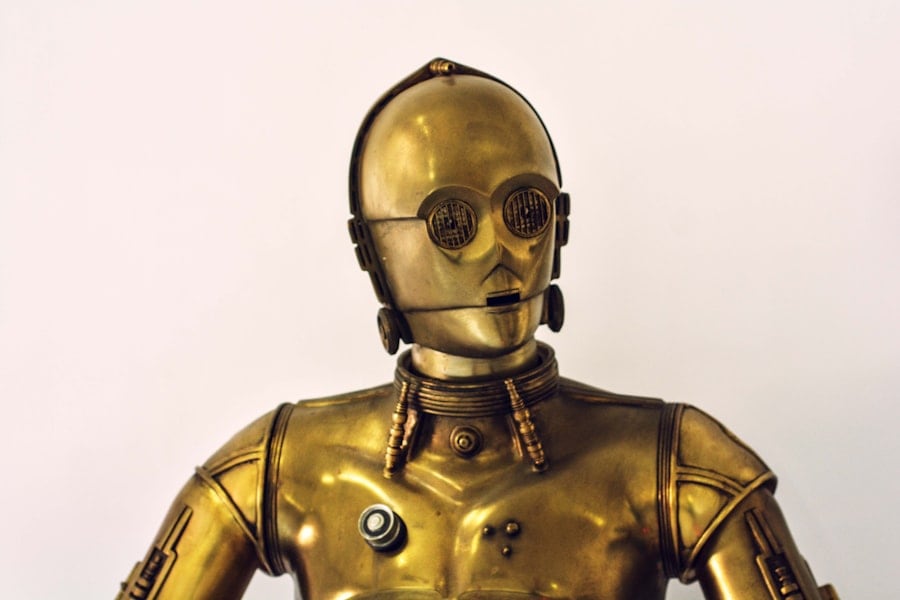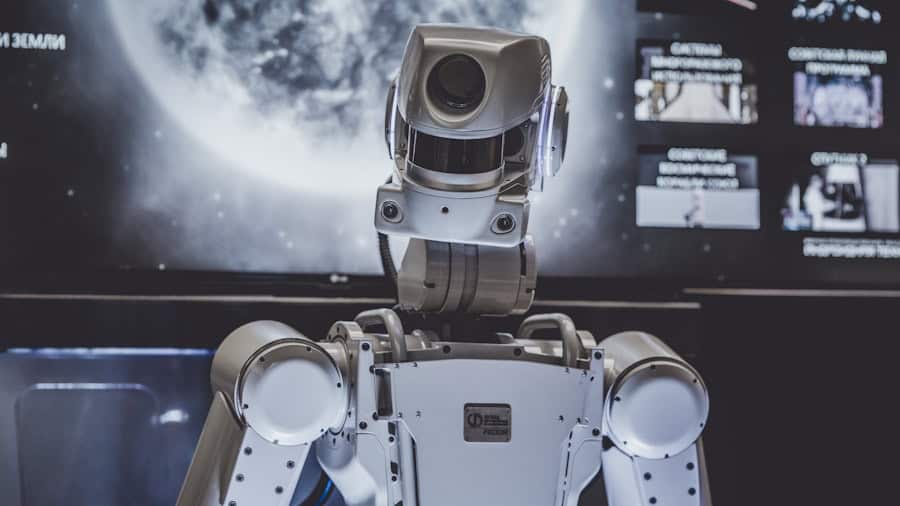The landscape of fitness training is undergoing a significant transformation, driven by advancements in technology and the increasing demand for personalized workout experiences. At the forefront of this evolution is the integration of robotics into fitness training, which offers a unique approach to tailoring exercise regimens to individual needs. Personalized fitness training with robots combines the precision of machine learning with the adaptability of human trainers, creating a hybrid model that can cater to diverse fitness levels, goals, and preferences.
This innovative approach not only enhances the effectiveness of workouts but also makes them more engaging and accessible. As society becomes more health-conscious, the need for effective and personalized fitness solutions has never been greater. Traditional personal training often faces limitations, such as availability, cost, and the variability of human performance.
In contrast, robots equipped with advanced sensors and artificial intelligence can provide consistent, data-driven feedback and support. This shift towards robotic assistance in fitness training is not merely a trend; it represents a fundamental change in how individuals can approach their health and wellness journeys. By leveraging technology, personalized fitness training with robots promises to democratize access to high-quality fitness guidance, making it possible for anyone to achieve their health goals.
Key Takeaways
- Personalized fitness training with robots offers a new and innovative approach to achieving fitness goals.
- Using robots for personalized fitness training can lead to improved motivation, accountability, and efficiency in workouts.
- Different types of robots, such as humanoid robots, exoskeletons, and robotic trainers, are used for personalized fitness training.
- Robots customize workouts for individuals by analyzing their physical abilities, tracking progress, and adjusting exercises accordingly.
- Artificial intelligence plays a crucial role in personalized fitness training by enabling robots to learn and adapt to individual needs and preferences.
Benefits of Using Robots for Personalized Fitness Training
Customized Workout Experiences
Robots can deliver highly tailored workout experiences, unlike traditional trainers who may rely on generalized programs. By analyzing an individual’s physical capabilities, preferences, and progress in real-time, robots can create customized workout plans that adapt as the user evolves.
Consistency and Reliability
Robots can provide a level of consistency that is often challenging to achieve with human trainers. They are not subject to fatigue or emotional fluctuations, ensuring that users receive the same quality of instruction and motivation every time they engage in a workout session. This reliability is particularly beneficial for individuals who thrive on routine and structure.
Flexibility and Convenience
Robots can offer 24/7 availability, allowing users to train at their convenience without being constrained by scheduling conflicts or geographical limitations. This flexibility is especially appealing in today’s fast-paced world where time management is crucial.
Types of Robots Used for Personalized Fitness Training
The realm of robotics in fitness training encompasses a variety of devices designed to meet different needs and preferences. One prominent category includes robotic personal trainers, which are often equipped with advanced sensors and artificial intelligence algorithms. These robots can guide users through workouts by demonstrating exercises, providing real-time feedback on form and technique, and adjusting routines based on performance metrics.
For example, companies like JAXJOX have developed smart kettlebells that track weight lifted and repetitions while offering guided workouts through an accompanying app. Another type of robot gaining traction in personalized fitness training is the robotic exoskeleton. These devices are particularly beneficial for rehabilitation and strength training, as they assist users in performing movements that may be difficult due to injury or physical limitations.
Exoskeletons can provide support and resistance, enabling users to engage in exercises that promote recovery and strength building. For instance, the EksoGT exoskeleton has been used in physical therapy settings to help patients regain mobility after strokes or spinal cord injuries. Additionally, there are interactive fitness platforms that utilize robotic technology to create immersive workout experiences.
These platforms often combine virtual reality with robotic elements to engage users in gamified fitness challenges. For example, the Peloton Bike+ incorporates AI-driven features that adjust resistance based on user performance while providing an interactive community experience through live classes. Such innovations not only enhance motivation but also make workouts more enjoyable.
How Robots Customize Workouts for Individuals
The customization of workouts through robotic systems hinges on sophisticated data collection and analysis techniques. Robots equipped with sensors can gather a wealth of information about an individual’s physical condition, including heart rate variability, muscle engagement, and even emotional responses during exercise. This data is then processed using algorithms that identify patterns and trends in performance over time.
For instance, if a user consistently struggles with a particular exercise or shows signs of fatigue earlier than expected, the robot can modify the workout plan accordingly. Furthermore, many robotic fitness systems incorporate user feedback mechanisms that allow individuals to communicate their preferences and experiences directly. This interaction can take various forms, such as voice commands or touch interfaces on screens.
By integrating user input into the customization process, robots can create a more personalized experience that aligns with individual goals and motivations. For example, if a user expresses a desire to focus on strength training rather than cardio, the robot can adjust the workout regimen to prioritize weightlifting exercises while still ensuring a balanced approach to overall fitness.
The Role of Artificial Intelligence in Personalized Fitness Training
Artificial intelligence (AI) plays a pivotal role in enhancing the capabilities of robots used for personalized fitness training. Through machine learning algorithms, AI systems can analyze vast amounts of data collected from users over time to identify trends and make predictions about future performance. This predictive capability allows robots to anticipate when a user may need a change in their workout routine or when they might be at risk of injury due to overtraining.
Moreover, AI enables robots to learn from each interaction with users, continuously refining their understanding of individual preferences and capabilities. For instance, if a user consistently performs better with certain types of exercises or responds positively to specific motivational cues, the AI can adapt future sessions accordingly. This level of personalization not only enhances user satisfaction but also improves overall training outcomes by ensuring that workouts remain challenging yet achievable.
Additionally, AI-driven analytics can provide users with insights into their progress that go beyond simple metrics like weight loss or muscle gain. By analyzing data related to sleep patterns, nutrition habits, and stress levels alongside workout performance, AI systems can offer holistic recommendations for improving overall health and wellness.
Challenges and Limitations of Using Robots for Personalized Fitness Training
Despite the numerous advantages associated with robotic fitness training, several challenges and limitations must be addressed for widespread adoption. One significant concern is the initial cost associated with acquiring advanced robotic systems. High-quality robots equipped with sophisticated sensors and AI capabilities can be prohibitively expensive for many individuals or small fitness facilities.
This financial barrier may limit access to personalized training solutions for those who could benefit most from them. Another challenge lies in the potential for technological malfunctions or inaccuracies in data collection. While robots are designed to provide precise feedback and guidance, they are not infallible.
Issues such as sensor errors or software glitches could lead to incorrect assessments of an individual’s performance or capabilities. Such inaccuracies could hinder progress or even result in injuries if users follow flawed instructions based on erroneous data. Furthermore, there is an inherent limitation in the emotional connection that human trainers provide.
While robots can offer motivation through programmed responses and encouragement, they lack the empathy and understanding that come from human interaction. Many individuals find motivation through personal relationships with trainers who understand their struggles and triumphs on a deeper level. As such, while robots can enhance training experiences, they may not fully replace the value of human connection in fitness coaching.
Tips for Choosing the Right Robot for Personalized Fitness Training
Selecting the right robot for personalized fitness training involves careful consideration of several factors tailored to individual needs and preferences. First and foremost, potential users should assess their specific fitness goals—whether they aim to lose weight, build muscle, improve endurance, or rehabilitate from an injury. Different robotic systems may excel in various areas; thus, aligning personal objectives with the capabilities of available devices is crucial.
Another important aspect is evaluating the level of interactivity offered by the robot. Some systems provide basic guided workouts without much customization, while others leverage advanced AI to create highly personalized experiences based on real-time data analysis. Users should seek out robots that offer features such as adaptive workout plans, real-time feedback on form and technique, and integration with other health-tracking devices or apps.
Additionally, it is essential to consider user-friendliness when selecting a robotic trainer. The interface should be intuitive and easy to navigate so that users can focus on their workouts rather than struggling with technology. Reading reviews from other users can provide valuable insights into how well a particular robot performs in real-world scenarios.
The Future of Personalized Fitness Training with Robots
The future of personalized fitness training with robots appears promising as technology continues to advance at an unprecedented pace. Innovations in artificial intelligence will likely lead to even more sophisticated algorithms capable of delivering hyper-personalized workout experiences tailored to individual needs and preferences. As these systems become more intuitive and responsive, users will benefit from increasingly accurate assessments of their performance and progress.
Moreover, as robotics technology becomes more affordable and accessible, we may see a proliferation of robotic solutions across various settings—from home gyms to commercial fitness centers. This democratization of technology could empower individuals from all walks of life to engage in personalized fitness training without the constraints imposed by traditional models. Additionally, the integration of virtual reality (VR) and augmented reality (AR) into robotic fitness training could revolutionize how individuals experience workouts.
Imagine engaging in a high-intensity interval training session while virtually competing against others in an immersive environment or receiving real-time feedback from a holographic trainer guiding you through each movement. Such advancements could transform exercise into an engaging experience that motivates individuals to stay committed to their fitness journeys. As we look ahead, it is clear that personalized fitness training with robots will continue to evolve, offering innovative solutions that cater to diverse needs while enhancing overall health and wellness outcomes for individuals worldwide.
If you are interested in exploring the latest technology trends, you may also want to check out this article on the features of the Samsung Galaxy Chromebook 2. This Chromebook offers a sleek design and powerful performance, making it a great option for those in need of a reliable and versatile device for work or play.
FAQs
What is personalized fitness training at home?
Personalized fitness training at home refers to the use of customized workout programs and exercises tailored to an individual’s specific fitness goals, abilities, and preferences, all within the comfort of their own home.
How are robots being used for personalized fitness training at home?
Robots are being used for personalized fitness training at home through the development of advanced robotic technology that can guide individuals through workouts, provide real-time feedback, track progress, and adjust exercises based on the user’s performance.
What are the benefits of using robots for personalized fitness training at home?
Some benefits of using robots for personalized fitness training at home include convenience, accessibility, personalized guidance, real-time feedback, motivation, and the ability to track progress and make adjustments to the workout program as needed.
Are there any limitations to using robots for personalized fitness training at home?
Limitations to using robots for personalized fitness training at home may include the initial cost of the technology, potential technical issues, the lack of human interaction and personalized touch, and the need for ongoing updates and maintenance.



